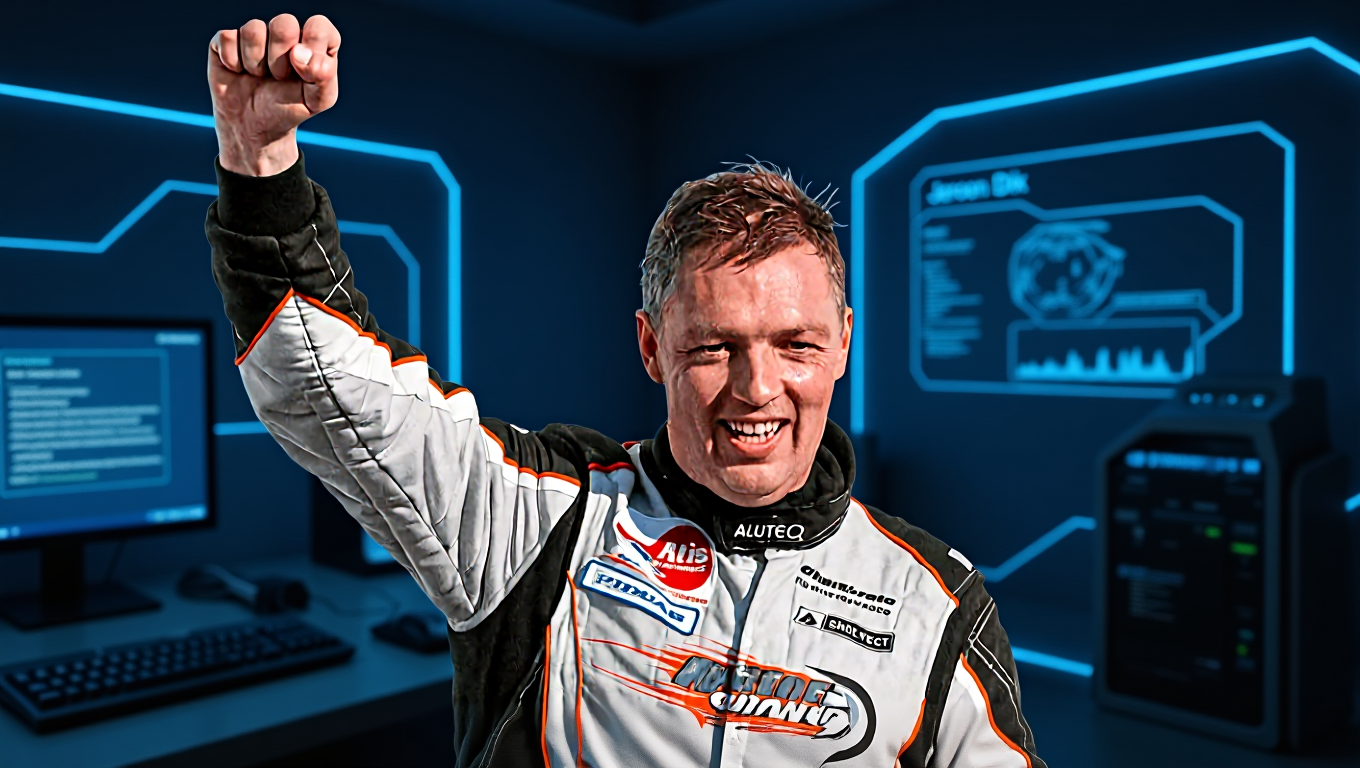Introduction to Jeroen Dik and his background
Art has the power to inspire, provoke thought, and transport us through time. But behind each masterpiece lies a story that extends beyond the brushstrokes and colors we see. Enter Jeroen Dik, a pioneering art conservation scientist who is reshaping how we analyze and understand artwork.
With an impressive background rooted in heritage science and advanced imaging techniques, his work transcends traditional boundaries of art preservation. As museums strive to protect cultural treasures for future generations, experts like Jeroen are leading the charge with innovative methodologies that unveil hidden layers of history within every canvas. Get ready to dive into a world where artistry meets scientific inquiry!
Who is Jeroen Dik
Jeroen Dik is an esteemed scientist and researcher with a profound passion for art conservation. He serves as a professor at TU Delft, where he combines his expertise in science and the humanities to explore the intricate layers of historical artworks.
His academic journey has equipped him with invaluable skills in optical imaging and pigment analysis techniques. These tools allow him to uncover hidden details within paintings, revealing their true stories.
Dik collaborates closely with prestigious institutions like the Rijksmuseum. His work emphasizes the importance of interdisciplinary approaches that bridge science and artistic heritage.
Through innovative methodologies such as x-ray studies and digital imaging, Jeroen Dik stands at the forefront of conservation technology. His commitment to preserving cultural treasures makes him a pivotal figure in contemporary art research.
The role of art conservation scientists in preserving cultural heritage
Art conservation scientists play a crucial role in safeguarding our cultural heritage. Their expertise blends science and art, ensuring that historic pieces endure the test of time.
These specialists analyze artworks using advanced techniques. They examine materials, structure, and deterioration processes to create effective preservation strategies. By understanding how various elements interact within an artwork, they can help prevent irreversible damage.
Moreover, conservation scientists work closely with museums and galleries. Their insights inform restoration efforts while respecting the original intent of artists. This delicate balance between intervention and authenticity is vital for maintaining historical integrity.
Through research and collaboration with institutions like TU Delft, these professionals push boundaries in art diagnostics techniques. Their dedication not only preserves individual works but also enhances our collective understanding of artistic evolution through history.
Dik’s innovative techniques for analyzing artwork
Jeroen Dik is at the forefront of art analysis, employing groundbreaking techniques that push the boundaries of traditional methods. His expertise in optical imaging delivers intricate insights into artworks without causing damage.
One standout approach involves x-ray fluorescence mapping. This technique allows him to identify elemental compositions beneath layers of paint, revealing an artwork’s secrets while preserving its integrity.
Dik also utilizes imaging spectroscopy, which captures detailed spectral data across paintings. This method enhances pigment identification and helps trace historical changes in color usage over time.
Beyond these technologies, he integrates digital imaging tools to create comprehensive visual records for conservation efforts. By merging science with artistry, Jeroen Dik not only examines but elevates our understanding of cultural heritage through meticulous attention to detail and innovation.
Examples of Dik’s work and its impact on the art world
Jeroen Dik has made remarkable strides in the realm of art conservation science. His groundbreaking work often combines advanced technology with traditional analysis methods, leading to new insights into historical artworks.
One notable example involves his pigment analysis on famous paintings at the Rijksmuseum. By utilizing x-ray fluorescence mapping, he uncovered previously unknown layers of paint. This not only revealed artists’ techniques but also offered context about their creative processes.
Dik’s digital imaging innovations have transformed how museums approach artwork diagnostics. His contributions enable conservators to assess conditions more effectively and develop tailored restoration strategies.
The impact of his research extends beyond individual pieces; it enriches our understanding of cultural heritage as a whole. By employing scientific methods, Jeroen Dik inspires a deeper appreciation for artistry across generations and disciplines within the art community.
Challenges faced by art conservation scientists
Art conservation scientists encounter a myriad of challenges in their quest to preserve cultural heritage. One significant hurdle is the degradation of materials over time. Many artworks are composed of fragile substances that require meticulous handling and care.
Another challenge lies in funding and resources. Art conservation labs often operate on limited budgets, making it difficult to acquire advanced technology or hire specialized staff. This scarcity can hamper innovative research efforts.
Additionally, there’s the issue of public awareness and appreciation for scientific methods in art analysis. Many people still view art through an emotional lens rather than understanding the complex science behind its preservation.
Collaboration between disciplines can be tricky. Effective communication among artists, historians, chemists, and conservators is essential but sometimes fraught with misunderstandings regarding terminology or priorities in projects.
Future possibilities for the field of artwork analysis
The future of artwork analysis is brimming with potential. Advances in technology will play a pivotal role in shaping this field. For instance, developments in artificial intelligence could revolutionize how researchers interpret data from artworks.
Imagine algorithms that can identify patterns or anomalies invisible to the naked eye. Such tools would accelerate pigment identification and enhance the accuracy of technical art studies.
Collaboration across disciplines is also on the rise. Scientists, artists, and historians are increasingly working together to deepen our understanding of cultural heritage.
Moreover, as public interest grows, funding for research initiatives may increase significantly. This financial boost could lead to innovative projects that push boundaries further than ever before.
These possibilities suggest a vibrant future ahead for art conservation scientists like Jeroen Dik and their contributions will be invaluable in preserving our shared history through scientific exploration.
FAQ’s
1. Who is Jeroen Dik and what is he known for?
He is a Dutch scientist specializing in art conservation, painting analysis and advanced imaging technologies used to study historical artworks.
2. What technology did Jeroen Dik develop for artwork research?
He is known for X-ray fluorescence mapping, spectroscopic imaging and advanced digital scanning methods that reveal hidden layers in paintings.
3. How does Jeroen Dik’s work help museums?
His techniques help museums analyze pigments, restore artworks accurately, and uncover underdrawings without damaging the original painting.
4. Is Jeroen Dik associated with TU Delft?
Yes, he is a professor at TU Delft and leads major projects in imaging science and heritage research.
5. What are Jeroen Dik’s most important contributions?
His breakthroughs include high-resolution scanning, multi-layer analysis, 3D imaging and developing new tools for non-invasive artwork examination.
Conclusion
Art conservation is more than just an academic pursuit; it’s a vital endeavor to preserve our cultural heritage. The work of experts like Jeroen Dik highlights the intersection between science and art, revealing how innovative techniques can breathe new life into historical masterpieces. His contributions in optical scanning, pigment analysis, and digital imaging are transforming our understanding of artworks.
The application of scientific methods in art diagnostics allows for deeper insights into the materials used by artists throughout history. By examining layers of paint or utilizing x-ray fluorescence mapping, researchers uncover secrets hidden beneath the surface.
The importance of this work cannot be overstated. As we continue to explore and document our artistic past through rigorous scientific examination, we ensure that future generations will appreciate these treasures with a clearer lens both literally and figuratively. Preserving artworks isn’t merely about maintenance; it’s about safeguarding stories that connect us all across time and culture.
As technology advances within fields like imaging spectroscopy and museum conservation tools, the possibilities for future research expand exponentially. Scientists like Jeroen Dik are at the forefront of this evolution, paving the way for an enriched understanding of art that honors both its aesthetic value and its historical significance.





